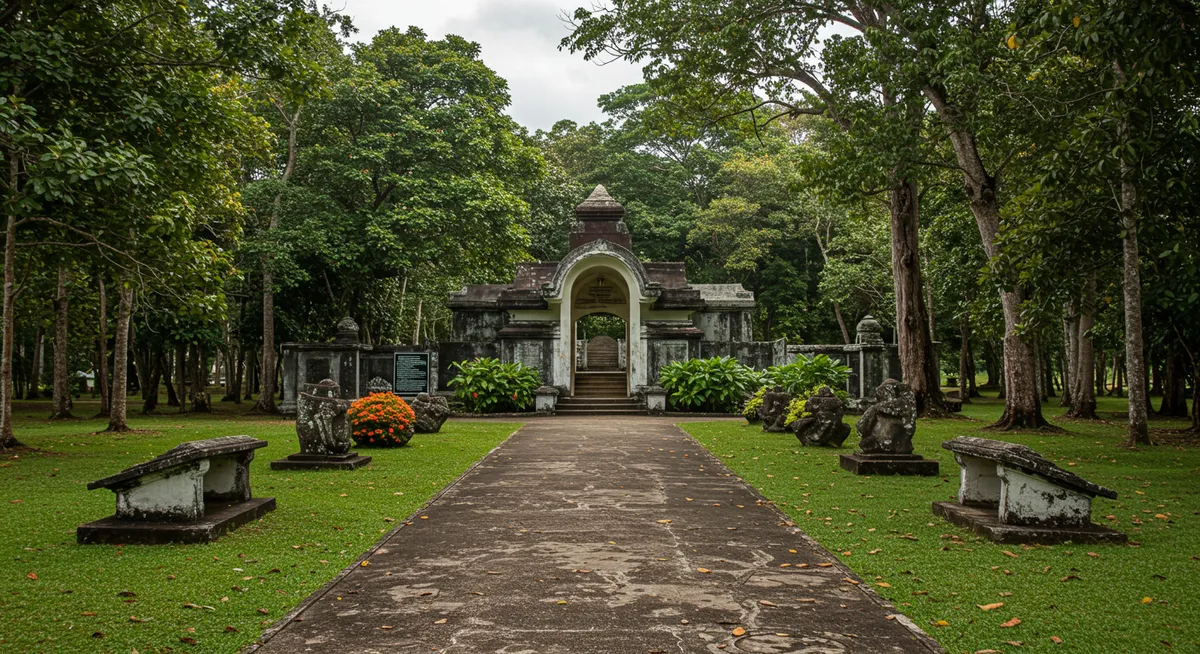
Sandakan Memorial Park History: A Guide
Table of Contents
Want to find the best travel deals for this destination? Chat with our travel hacking specialist!
Get Travel HacksCategory: sandakan-memorial-park-history
Unveiling the Profound History of Sandakan Memorial Park
Having spent considerable time researching the pivotal events of World War II in Southeast Asia, I understand the profound importance of sites like the Sandakan Memorial Park. This hallowed ground in Sandakan, Malaysia, stands as a solemn testament to immense suffering and incredible resilience. Understanding its history isn't just about dates and events; it's about connecting with the human story of courage and sacrifice. This guide delves into the poignant Sandakan Memorial Park history, offering insights into its origins, the horrific events it commemorates, and its enduring legacy for remembrance today.
The Origins: WWII POW Camp
The tragic Sandakan Memorial Park history begins in 1942, during the Japanese occupation of North Borneo. This site was established as a Prisoner of War (POW) camp, primarily holding Australian and British soldiers captured after the fall of Singapore. Initially, conditions were harsh but manageable, with prisoners forced into labor, including constructing the airfield that proved vital for the Japanese war effort. Over time, however, the situation deteriorated drastically due to severe neglect, malnutrition, and brutal treatment by their captors. My personal research into historical accounts revealed the grim reality of life within those barbed-wire confines, a daily struggle for survival against disease and starvation.
The Infamous Sandakan Death Marches
The most harrowing chapter in Sandakan Memorial Park history recounts the infamous Sandakan Death Marches of 1945. As Allied forces advanced, the Japanese command ordered the evacuation of the POWs from Sandakan to Ranau, approximately 260 km inland, over mountainous terrain. Three forced marches occurred between January and June 1945, under horrific conditions. Prisoners, already weakened by years of malnutrition and illness, were forced to walk, often without food or water, through dense jungle. Those who collapsed or could not keep pace were summarily executed. This period epitomizes the immense suffering endured, with only six Australians surviving the entire ordeal. For a complete understanding of the region's context, consider exploring our comprehensive Sandakan travel guide.
From Tragedy to Memorial: The Park's Establishment
Following the war, the discovery of mass graves at the former camp site spurred efforts to honor the fallen. The Sandakan Memorial Park was officially established in 1999, a joint initiative between the Australian and Malaysian governments, to ensure this profound part of history is never forgotten. It stands on the very ground where the POW camp once operated, serving as a tranquil, yet powerful, space for reflection and remembrance. My visit affirmed how thoughtfully the site was designed, allowing visitors to connect with the poignant Sandakan Memorial Park history through its various monuments and interpretive displays. If you plan to visit, knowing the best time to visit Sandakan can enhance your experience.
Legacy and Remembrance Today
Today, the Sandakan Memorial Park serves as a crucial pilgrimage site and educational center, drawing visitors from around the world, particularly Australia and the UK. It features a beautifully maintained garden, the remains of the POW camp's generator and boiler, a poignant Memorial Obelisk, and a Wall of Remembrance listing the names of those who perished. Annual Anzac Day services are held here, reinforcing the park's vital role in preserving the Sandakan Memorial Park history and honoring the sacrifice made. Understanding how to get to Sandakan is essential for those wishing to pay their respects. This significant site can also be integrated into a broader Sandakan itinerary for 3 days.
Frequently Asked Questions
What tragic events are commemorated at Sandakan Memorial Park?
When was Sandakan Memorial Park established?
Can I visit the original POW camp site?
The Sandakan Memorial Park history is a poignant reminder of human suffering, resilience, and the enduring importance of remembrance. It encourages visitors to reflect on the immense sacrifices made during World War II and to appreciate the peace we often take for granted. This site is more than just a collection of historical facts; it's a place where the echoes of the past resonate deeply, urging us to learn from history. We encourage you to visit this incredibly significant site to pay your respects and gain a profound appreciation for its powerful story, which is a key part of travel in Asia.